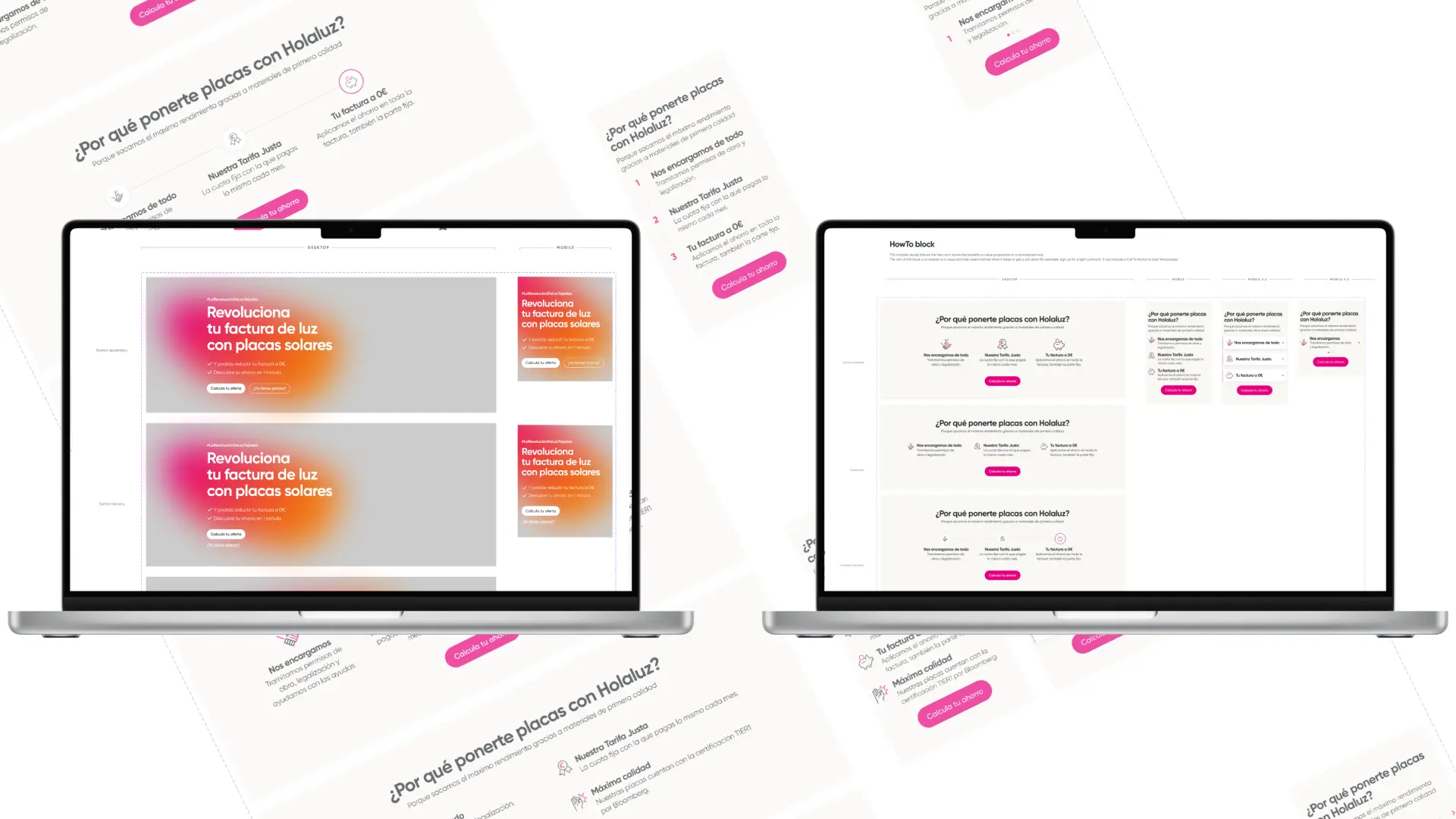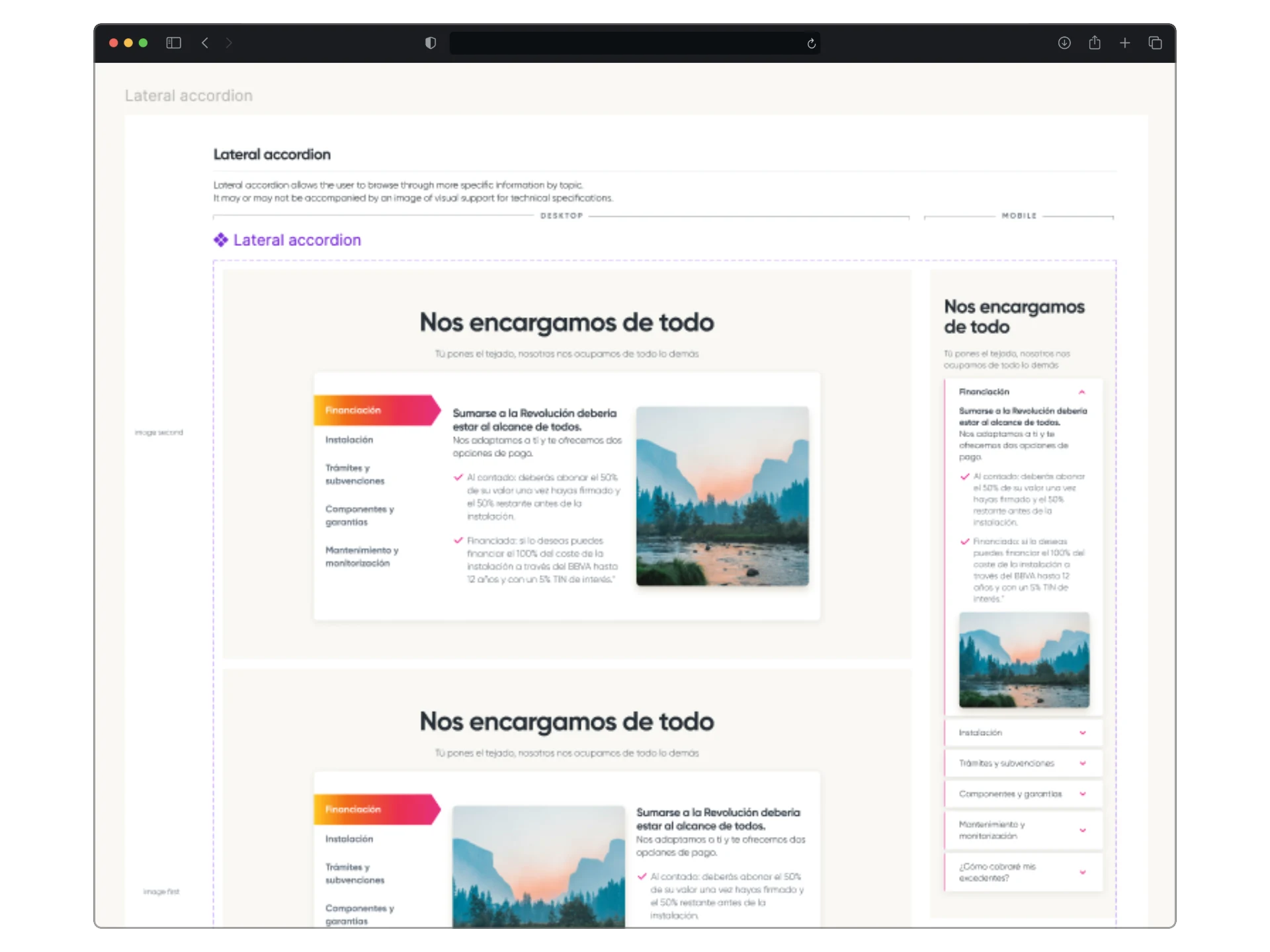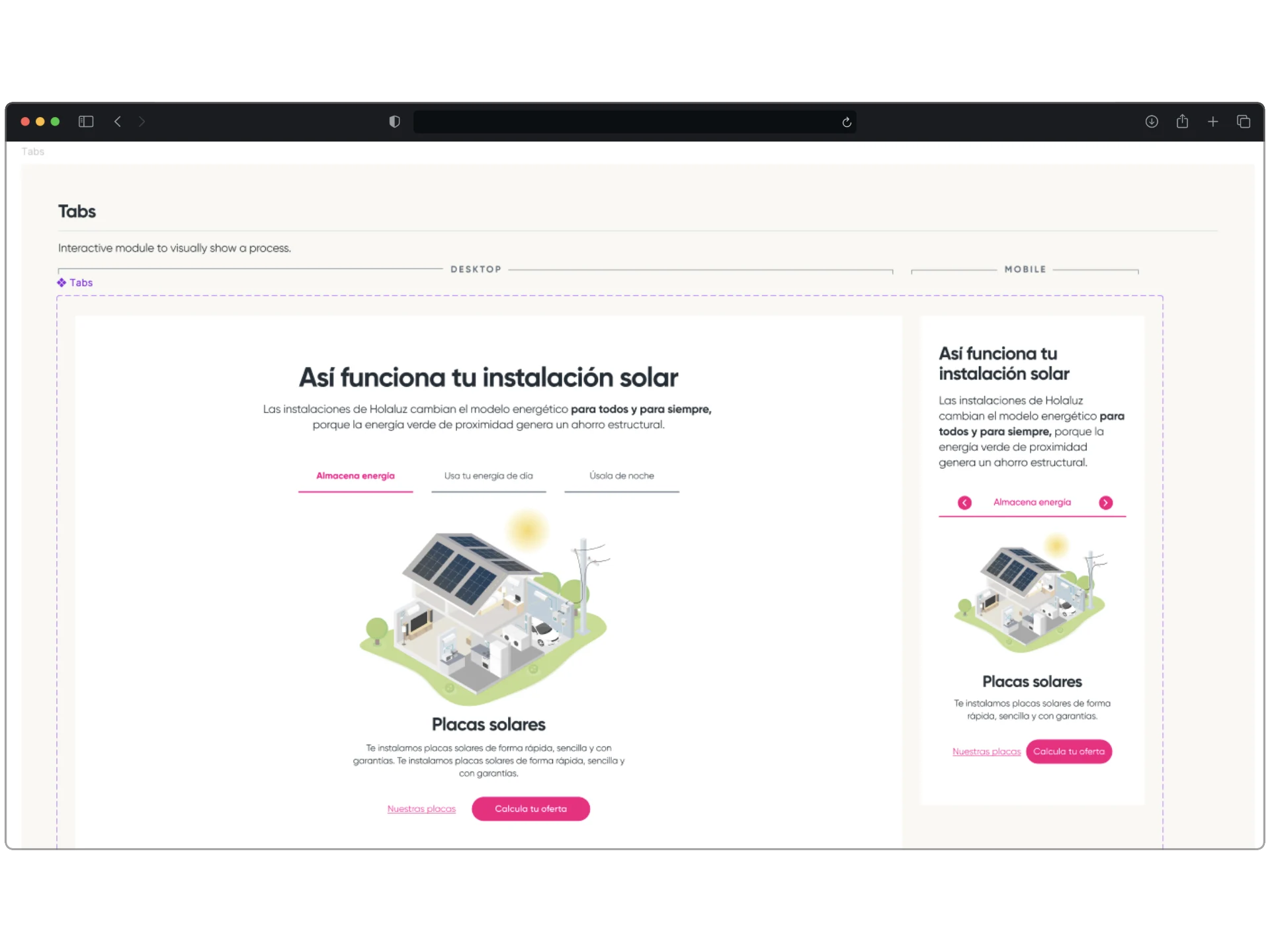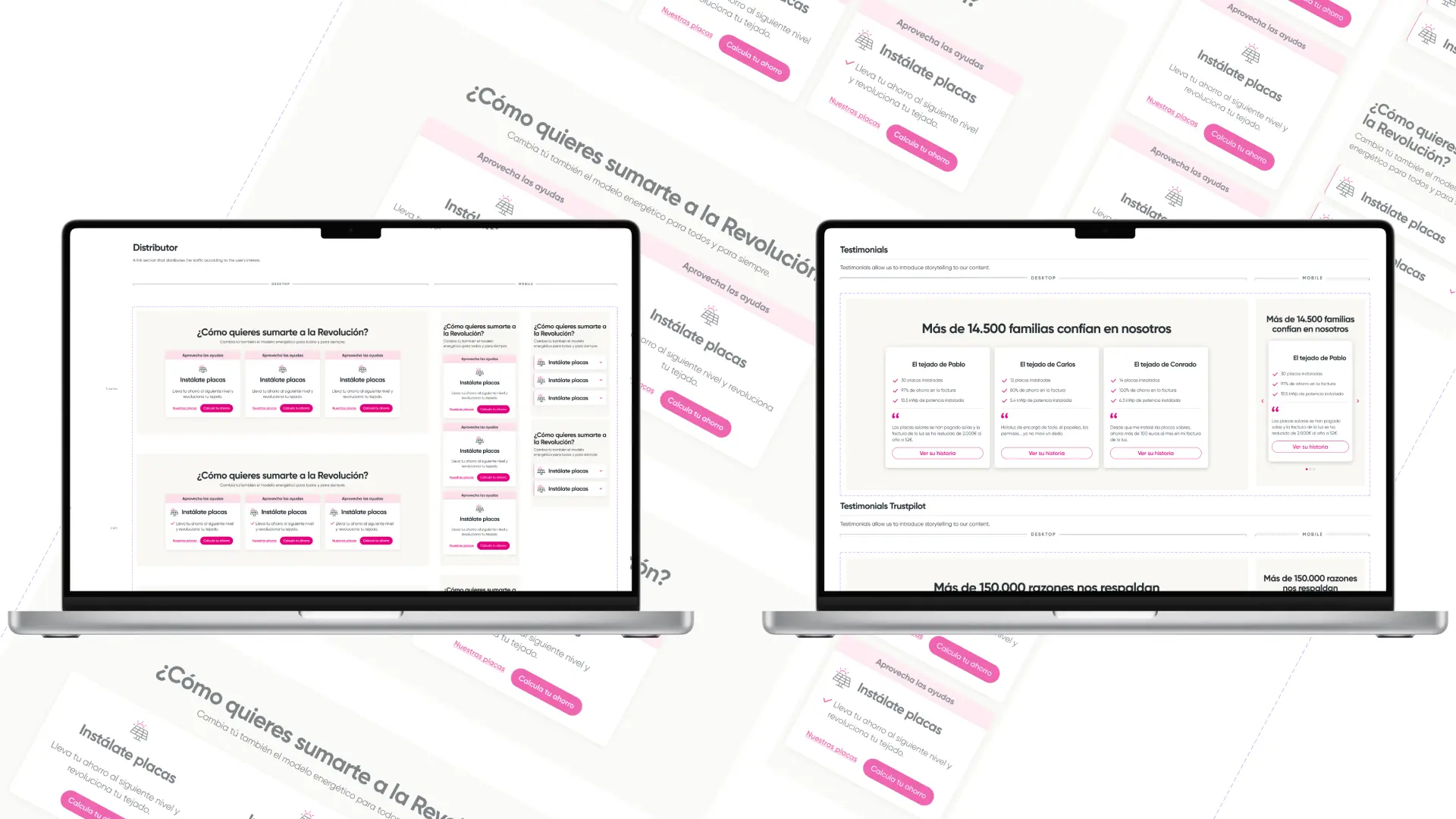🖥️ Participating in Holaluz’s rebranding was a multifaceted challenge, as it coincided with another technical hurdle: transitioning to a new tool for creating landing pages.
This shift limited the design team’s autonomy by requiring additional programming to implement new structures, which slowed down creative and iterative processes.







